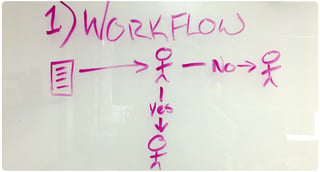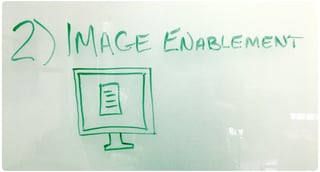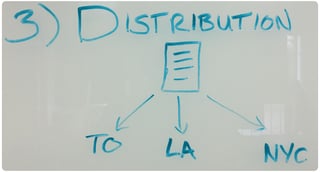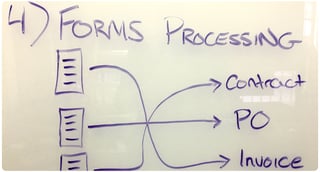The document scanning industry has been constantly growing and advancing for many years, with no stop in sight. As the industry continues to develop, one of the most impacted areas of business will be Small and Medium-sized Businesses (SMB’s), that will be able to afford advanced levels of technology and digital document abilities.
Content management is one of the areas that significant costs can be reduced. Various solutions have been unveiled to help SMBs address the business drivers that lie in the content management arena. Examples of the solutions include document imaging, storage, management, preservation, and processing. Some of the advances in the document scanning industry technology that are particularly beneficial to the SMB sector include:
 Workflow
Workflow
Business processes can be automated by applying workflow technology. Electronic documents can be routed to appropriate individuals or departments to expedite approval processes.
Image Enabled Software
 SMBs can now add scanning and document management functionalities to existing business applications and processes such as vendor and customer databases. This can be achieved through image enabled software technology. The document scanning industry technology allows businesses to implement document imaging without disrupting the way employees have been carrying out operations.
SMBs can now add scanning and document management functionalities to existing business applications and processes such as vendor and customer databases. This can be achieved through image enabled software technology. The document scanning industry technology allows businesses to implement document imaging without disrupting the way employees have been carrying out operations.
Document Distribution
 Businesses can use document distribution technology to distribute documents electronically over the internet. This in turn helps to save time and money that would have otherwise been spent on faxing the documents. Moreover, electronic document distribution can be used for redundant off-site storage to ensure physical protection of company data.
Businesses can use document distribution technology to distribute documents electronically over the internet. This in turn helps to save time and money that would have otherwise been spent on faxing the documents. Moreover, electronic document distribution can be used for redundant off-site storage to ensure physical protection of company data.
Forms Processing
 This document scanning technology allows SMBs to process documents such as invoices, purchase orders and accounts payable. The technology can be used to scan and extract data from either handwritten or typed text. Advances in forms processing technology allow businesses to process forms with either structured or unstructured data. Using the technology helps to reduce processing time from weekly to literally hours.
This document scanning technology allows SMBs to process documents such as invoices, purchase orders and accounts payable. The technology can be used to scan and extract data from either handwritten or typed text. Advances in forms processing technology allow businesses to process forms with either structured or unstructured data. Using the technology helps to reduce processing time from weekly to literally hours.
Scan to PDF
PDF (Portable Document Format) is one of the most widely used document formats in business. Today’s imaging scanning devices feature a combination of hardware and software applications that can scan paper documents into searchable PDF files. The scanning devices are compact and easy to operate. The PDF files can be protected to prevent edits, organized and easily shared across PC and mobile devices.
Archive and Retrieval
Archive and retrieval technology can be used to convert paper-based documents such as engineering, contracts, human resource records, customer records and other business documents into electronic documents. After conversion, the electronic documents can be archived, searched and retrieved for viewing or printing.
It is much faster to access electronic documents than paper ones. Businesses that convert paper documents to electronic ones have an efficient access to the documents for regulatory compliance audits.
Businesses can significantly reduce operational costs by using electronic documents. Switching to electronic documents also reduces the risk of losing or misplacing a document and eliminates the costs associated with a paper filing system. Today’s software technologies are being integrated with document scanning and storage technologies for use in diversified applications such as documents distribution, client record management, transaction processing, among others.
